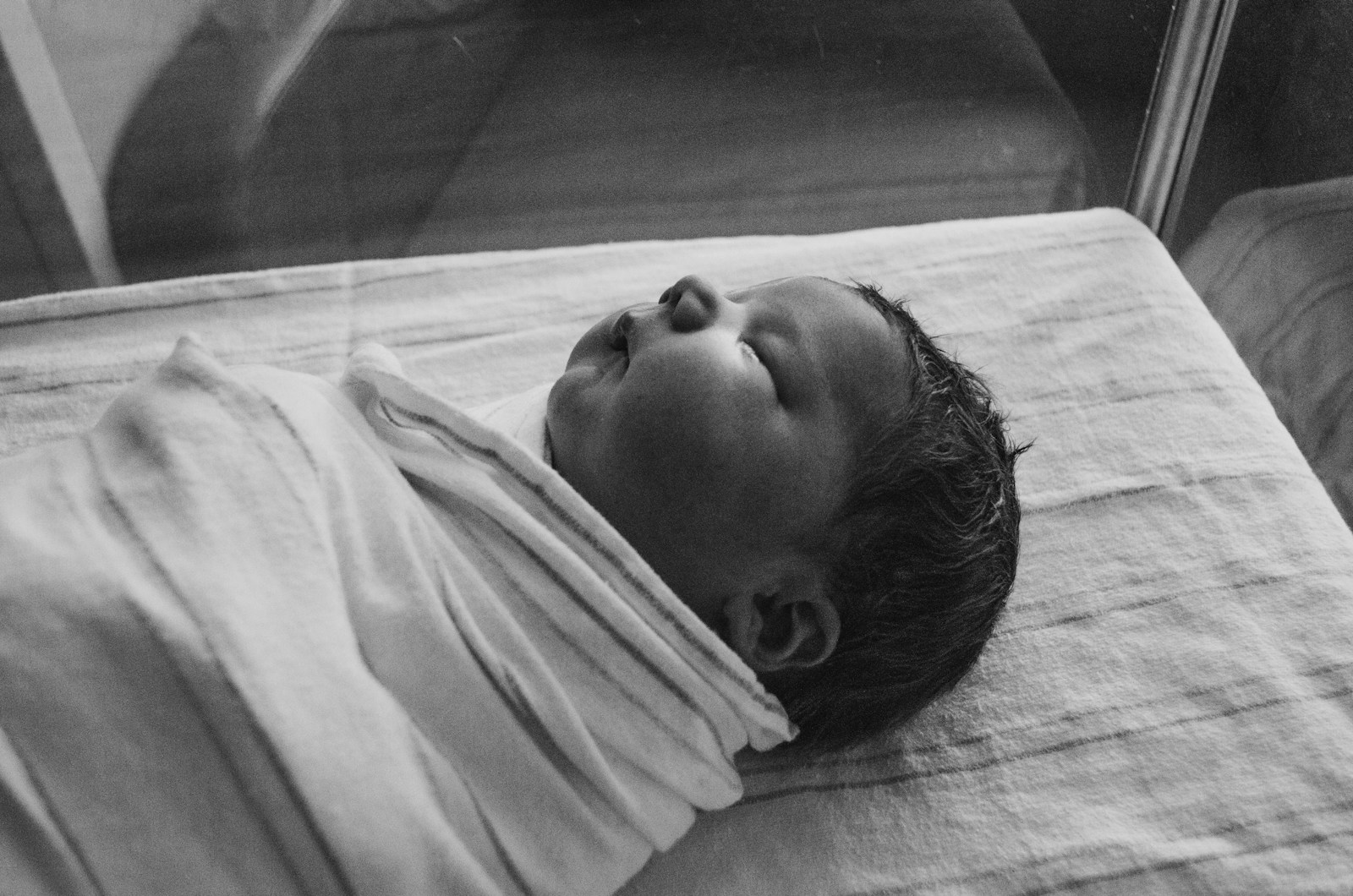Swaddling is a practice many parents rely on to help their newborns feel secure and sleep more soundly. Wrapping a baby snugly in a blanket mimics the feeling of being in the womb, which can soothe a newborn and reduce the startle reflex, helping them sleep longer and more peacefully. However, there comes a time when continuing to swaddle your baby is no longer safe or appropriate. Understanding when to stop swaddling is crucial for your baby’s safety and developmental progress.
In this article, we’ll explore when to stop swaddling, signs your baby is ready to transition out of swaddling, and tips for making that transition as smooth as possible.
What is Swaddling?
Swaddling is the practice of snugly wrapping a baby in a lightweight blanket to restrict their arm movement. This helps the baby feel secure and can prevent them from waking themselves up with the Moro reflex—a startle reflex common in newborns. Babies swaddled correctly may experience better sleep, as swaddling can prevent unnecessary movements and help calm fussiness.
The technique has been used for centuries, but in recent years, healthcare professionals have emphasized the importance of practicing safe swaddling techniques to prevent potential risks, such as overheating or restricted breathing.
Why Do Babies Like Being Swaddled?
Newborns come from a warm, enclosed environment—the womb—where they are in constant contact with the mother’s body. Swaddling recreates this sensation, providing comfort by making the baby feel cozy and secure. It also helps calm infant reflexes, such as jerking movements that can wake them up suddenly.
In addition to calming babies, swaddling is believed to reduce the risk of sudden infant death syndrome (SIDS) when practiced safely, as it encourages babies to sleep on their backs, which is the safest sleep position. However, once a baby begins to roll over, the risk of SIDS can increase if they are still swaddled.
When Should You Stop Swaddling?
There’s no one-size-fits-all answer to when you should stop swaddling your baby. However, most babies outgrow the need for swaddling between 3 to 6 months. The key indicator that it’s time to stop swaddling is when your baby begins to show signs of increased mobility, particularly rolling over.
1. When Your Baby Starts Rolling Over
The most important sign that it’s time to stop swaddling is when your baby begins to roll over. This can happen as early as 2 to 3 months of age for some babies, although it more commonly occurs between 4 and 6 months.
Once a baby can roll from their back to their stomach, swaddling becomes a safety hazard. A swaddled baby on their stomach may not have the ability to roll back or push themselves up, increasing the risk of suffocation. At this stage, transitioning out of the swaddle is crucial to ensure your baby’s safety.
2. When Your Baby’s Startle Reflex Lessens
The Moro reflex—or startle reflex—tends to diminish by 4 to 5 months of age. This reflex causes sudden jerky movements that can wake a baby, which is why swaddling is effective in the first few months. Once the startle reflex diminishes, your baby may no longer need swaddling to remain calm and sleep through the night.
3. When Your Baby Shows Discomfort or Resistance
Another clear sign that it’s time to stop swaddling is when your baby starts resisting the swaddle. If your baby begins to wriggle out of the swaddle or shows discomfort when wrapped, this may indicate that they no longer find it comforting. Some babies may prefer more freedom of movement as they grow and develop.
4. When Your Baby Shows Increased Arm and Leg Strength
As babies grow, they develop more strength in their arms and legs. If your baby is frequently breaking out of the swaddle or struggling against it, this might be a sign that they are ready to sleep without it. Swaddling can restrict their natural movements, and at this stage, your baby may benefit from the ability to explore more freely during sleep.
Why It’s Important to Stop Swaddling at the Right Time
Continuing to swaddle after your baby has shown signs of increased mobility, especially rolling, can present serious safety risks. Once your baby can roll onto their stomach, being swaddled restricts their ability to use their arms to push themselves up or move their head to a safer breathing position, potentially increasing the risk of suffocation.
The American Academy of Pediatrics (AAP) recommends discontinuing swaddling by the time your baby shows any signs of attempting to roll over, to reduce the risk of SIDS and accidental suffocation. Safe sleep practices include placing babies on their backs to sleep, without loose blankets, pillows, or stuffed animals in the crib.
How to Transition Your Baby Out of Swaddling
Transitioning out of swaddling can be challenging for some babies, especially if they’ve become accustomed to being swaddled to sleep. However, there are several methods you can try to ease the transition and ensure your baby continues to sleep soundly.
1. Gradual Transition: One Arm Out
One of the most common methods for transitioning out of swaddling is to do it gradually. Start by swaddling your baby with one arm out of the blanket. This gives them a little more freedom to move while still providing some of the security they’re used to. After a few nights, you can move to having both arms out of the swaddle, leaving only the torso wrapped.
2. Swaddle Alternatives: Sleep Sacks
Once your baby is ready to stop swaddling altogether, consider using a sleep sack or a wearable blanket as a swaddle alternative. These sleep sacks provide warmth and comfort without restricting movement, making them a safer option once your baby starts rolling over.
Many sleep sacks are designed to allow babies to move their arms freely while keeping their legs snug. This can help ease the transition from swaddling while still providing a comforting sleep environment. Popular brands like Halo SleepSack or Love To Dream offer products specifically designed for this purpose.
3. Allow for More Movement During the Day
Encouraging more tummy time and unrestricted movement during the day can help your baby adjust to sleeping without a swaddle at night. The more accustomed your baby becomes to moving their arms and legs freely, the easier the transition will be when it’s time to sleep without the swaddle.
4. Create a Soothing Sleep Routine
Having a consistent bedtime routine can help your baby adjust to life without swaddling. Consider incorporating calming activities such as a warm bath, gentle rocking, or playing soft music before bedtime. These activities can help signal to your baby that it’s time to sleep, even without the comfort of swaddling.
5. Patience is Key
Remember, transitioning out of swaddling can take time, and your baby may initially wake up more frequently. Be patient as your baby adjusts to the new sleeping arrangement, and try to offer additional comfort as needed. Within a few weeks, most babies will adapt to sleeping without a swaddle.
Common Questions About Stopping Swaddling
What if My Baby Can’t Sleep Without Being Swaddled?
It’s common for babies to take a little time to adjust to sleeping without a swaddle. If your baby struggles to sleep initially, try introducing a sleep sack or swaddling with one arm out, as mentioned earlier. Gradual transitions can make it easier for your baby to get used to sleeping without the full swaddle.
Is It Safe to Swaddle My Baby During Naps?
Once your baby starts showing signs of rolling over, it’s essential to stop swaddling for both naps and nighttime sleep. The risk of suffocation due to restricted movement applies at all times, not just during nighttime sleep.
What If My Baby Rolls Over During Sleep But Isn’t Ready to Stop Swaddling?
If your baby has started rolling over, it’s important to stop swaddling immediately. Transitioning to a sleep sack or another alternative that allows for free arm movement will provide the necessary freedom for your baby to roll safely and push themselves up if needed.
Conclusion: When to Stop Swaddling
Swaddling is an excellent way to help soothe and calm your newborn, but it’s important to recognize the signs that it’s time to stop. Babies typically begin to outgrow the need for swaddling between 3 to 6 months, with the most critical indicator being when your baby starts rolling over. Once your baby shows signs of rolling or increased mobility, transitioning to a safer sleep alternative is essential to prevent the risk of suffocation or other sleep-related hazards.
By paying attention to your baby’s developmental milestones and creating a smooth transition process, you can help your baby continue to sleep soundly and safely as they grow. Remember to consult your pediatrician if you have any concerns about your baby’s sleep habits or the transition out of swaddling.




